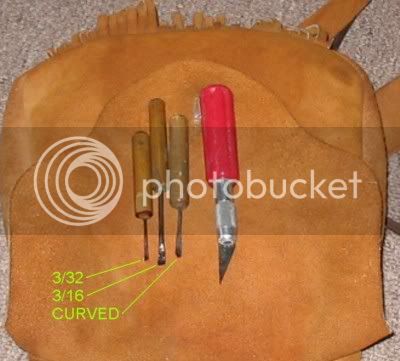SKS: To answer your first question, I would say it depends on your eyesight. It also depends on whether your installing the inlay on a finished gun or on one which is being built.
The eyesight thing is important because your making a precision pocket in the wood and you have to see clearly just where to chisel and where not to.
The finished vs unfinished is obvious: On an unfinished stock, you can file and sand as much as you need to, to make the surfaces match. On a finished stock, you cannot adjust the woods height to match the inlay surface height.
Scale of 1 to 10? With 10 being the hardest, I'd say about a 7. It's not that it's so hard to do, it is just takes quite a bit of time and a little screw up is pretty obvious.
Why use small chisels? Using a large chisel is kinda like trying to park a Semi in a Compact Car parking space. It just won't fit. Remember, your trying to create a nice smooth surface about .040 below the stock surface for the inlay to sit on and you have to remove the wood in all of the little corners of the pocket without damageing the walls of the pocket.
On round or oval inlays it's not too hard to do, but if the inlay has little points like a star, the chisel has to get down into those corners.
These are some of the chisels I've made to work in these tiny pockets:
The Franklin County rifle is Curly Maple stained with Birchwood Casey Walnut stain and Colonial Brown Stain. It's finished with about 15 coats of hand rubbed Birchwood Casey Tru-Oil.
If you would like to read a little more on inlays follow these LINKS
INLAYS
INLAYING 2
By the way, Susie at Muzzleloading Builders Supplies has dozens of different inlays in Brass, German Silver and Sterling Silver. They don't cost very much either.







